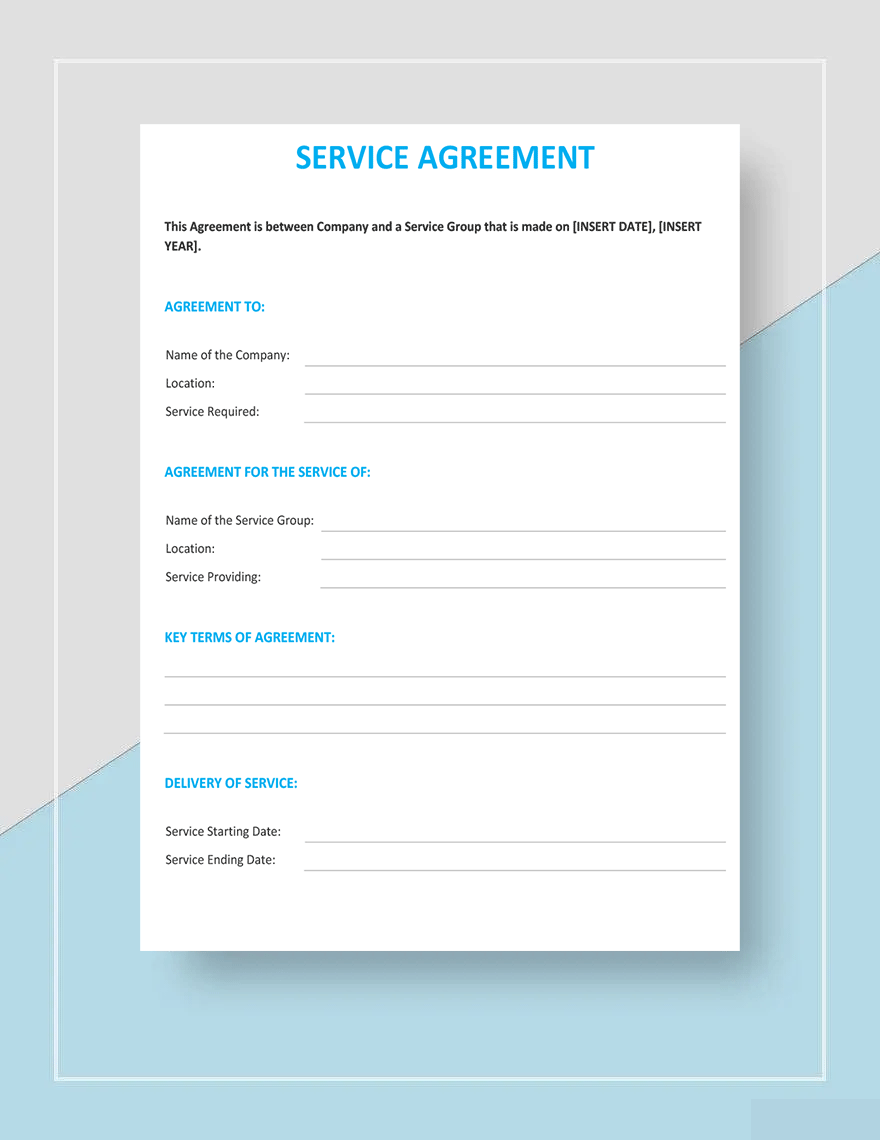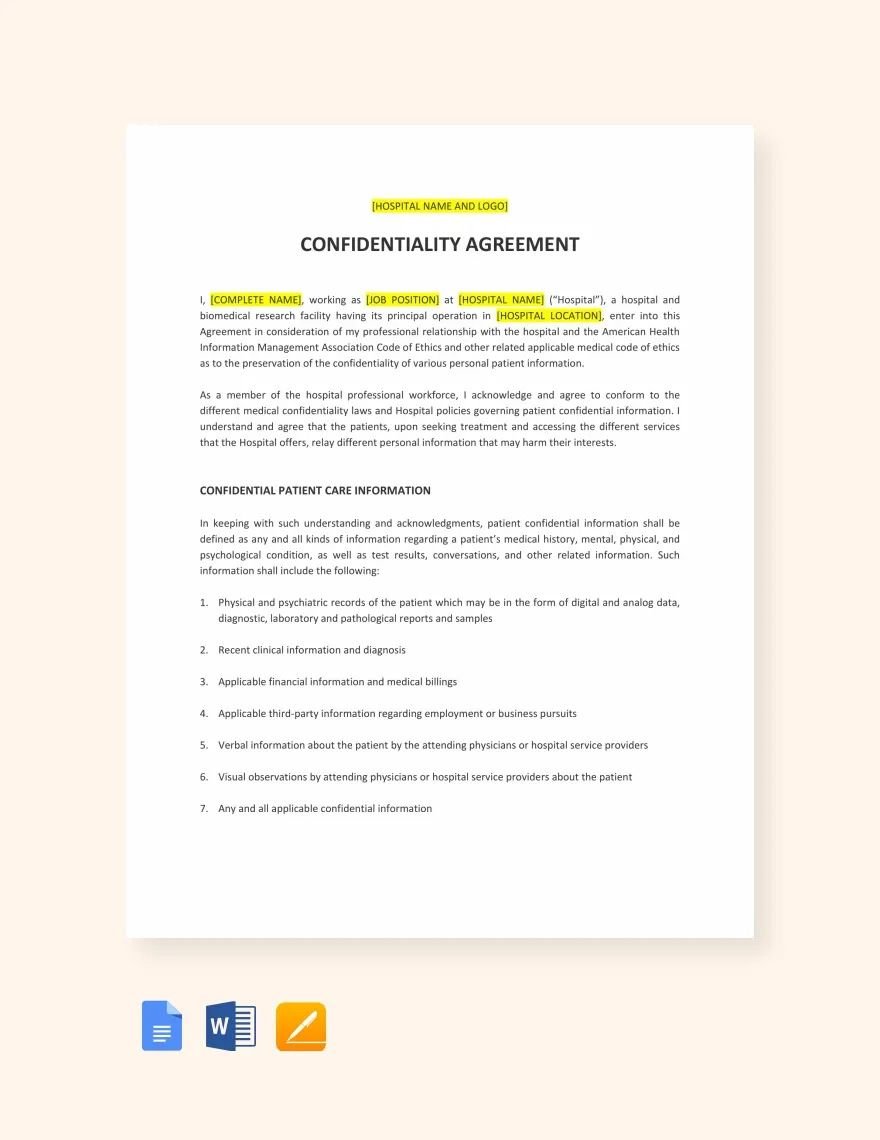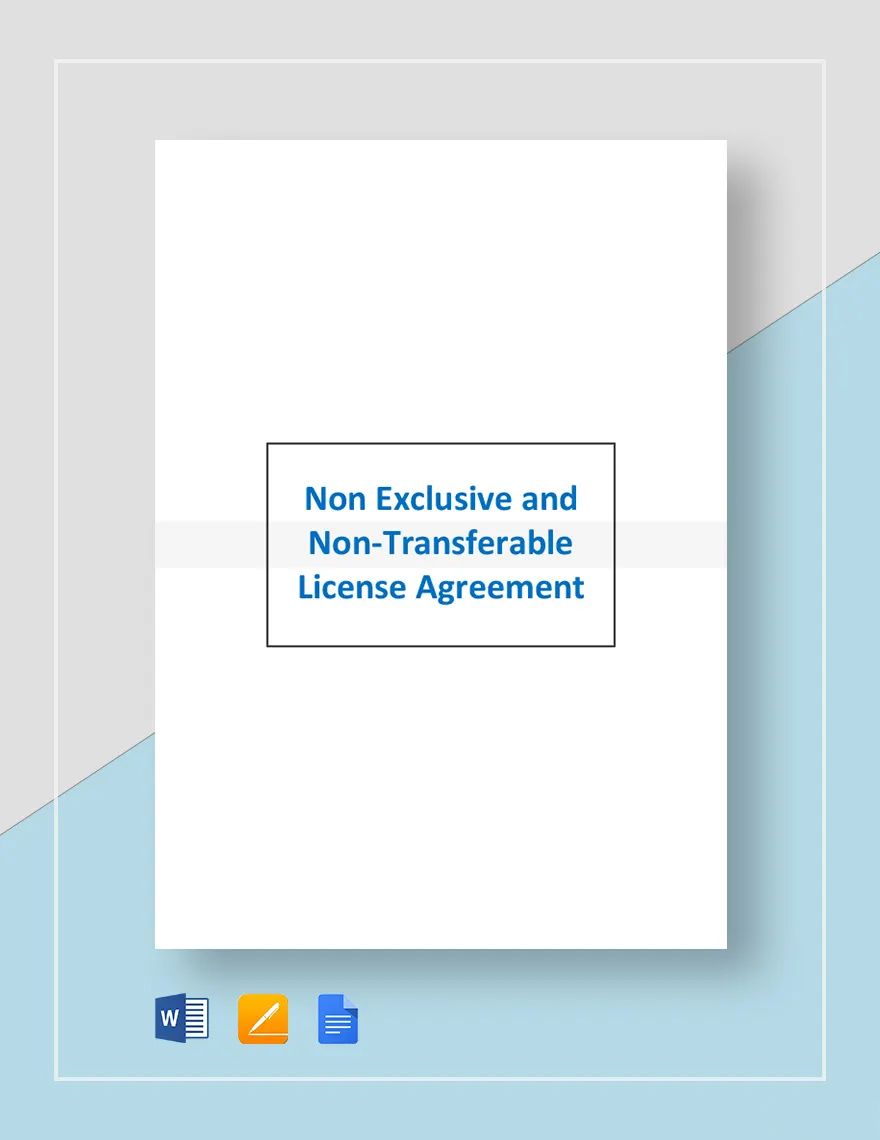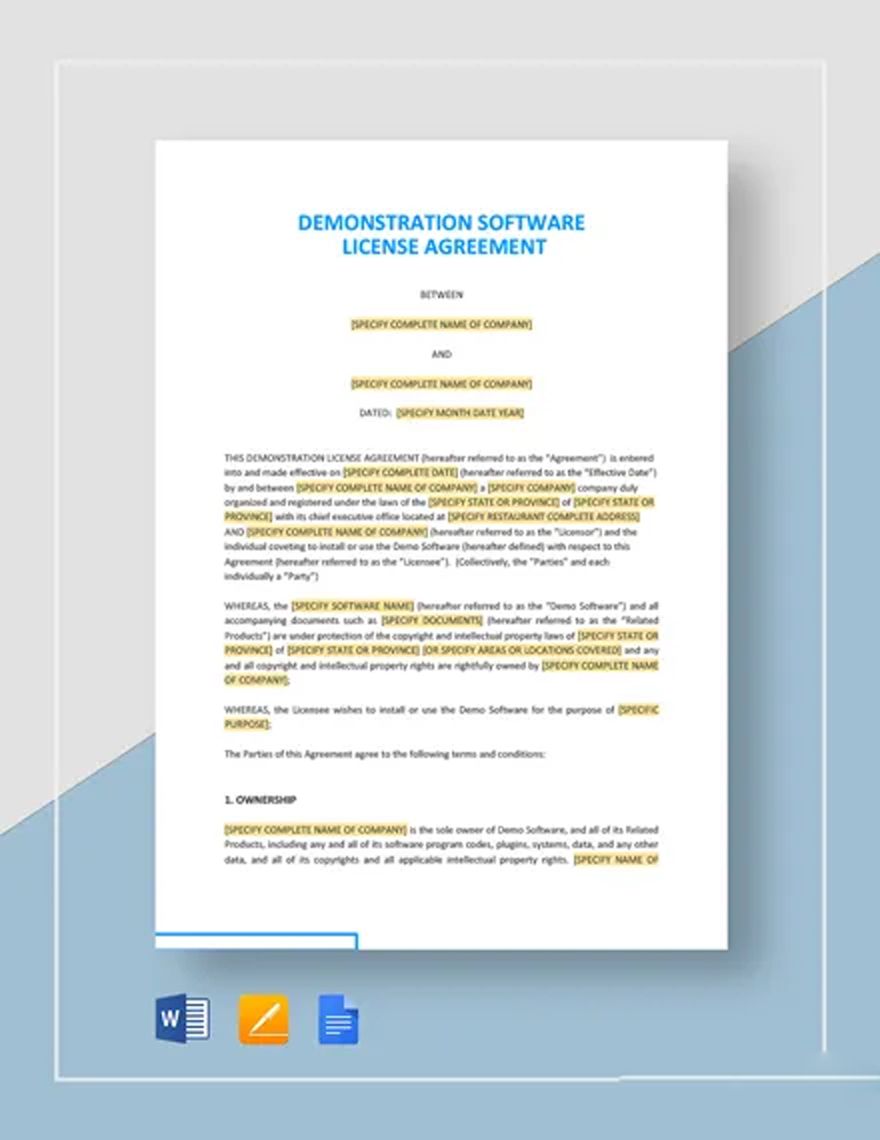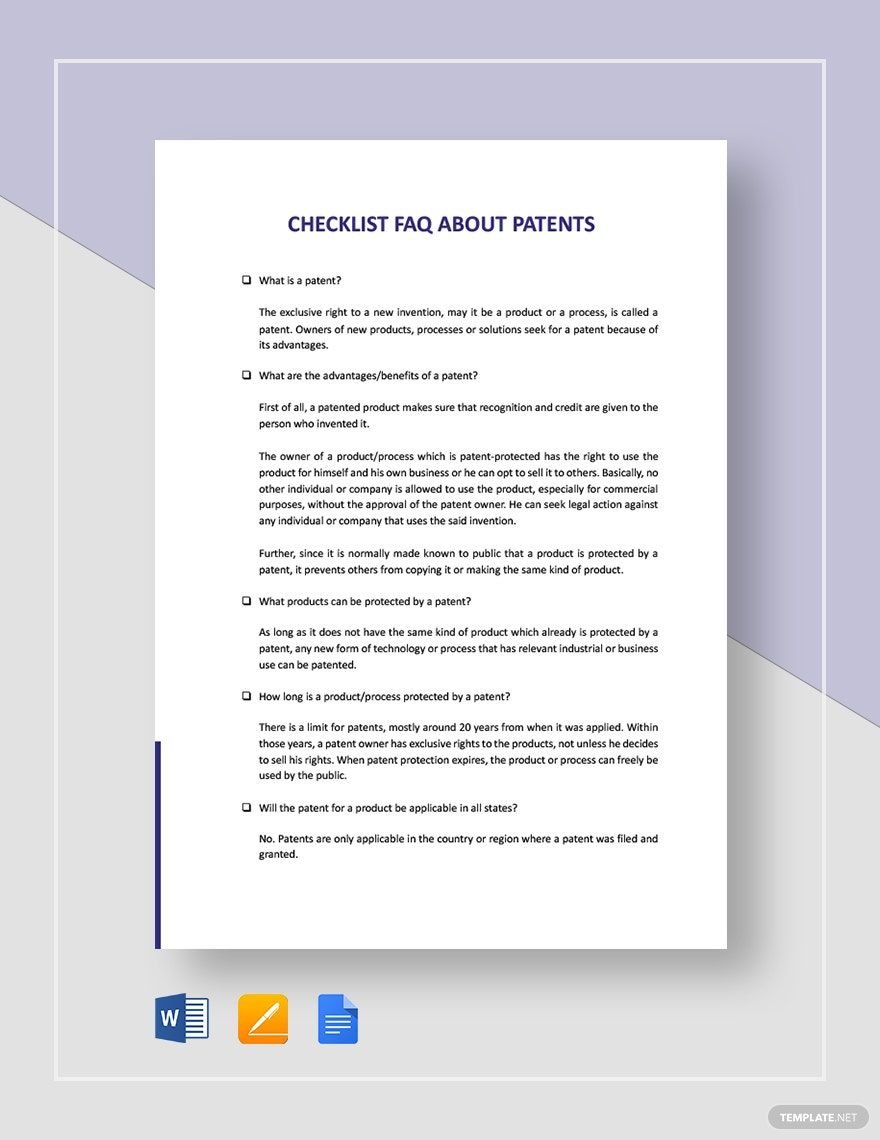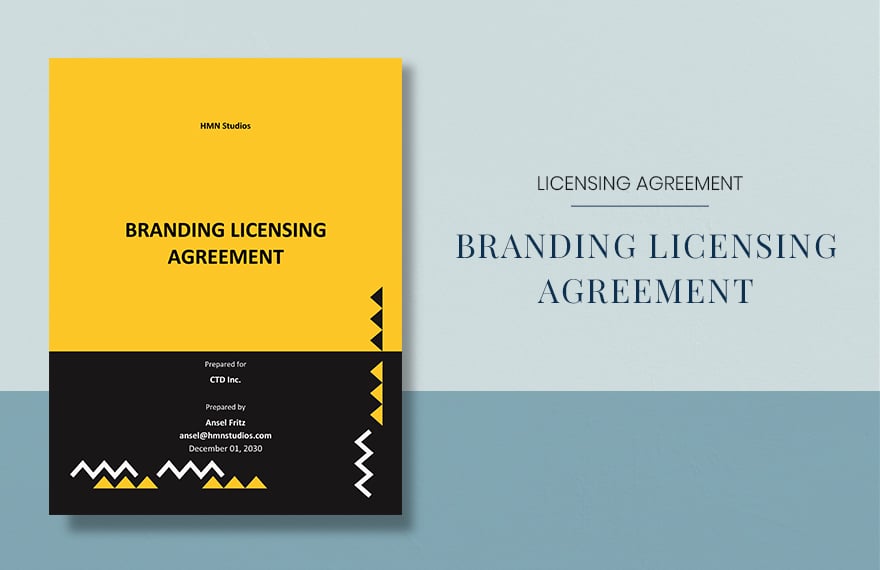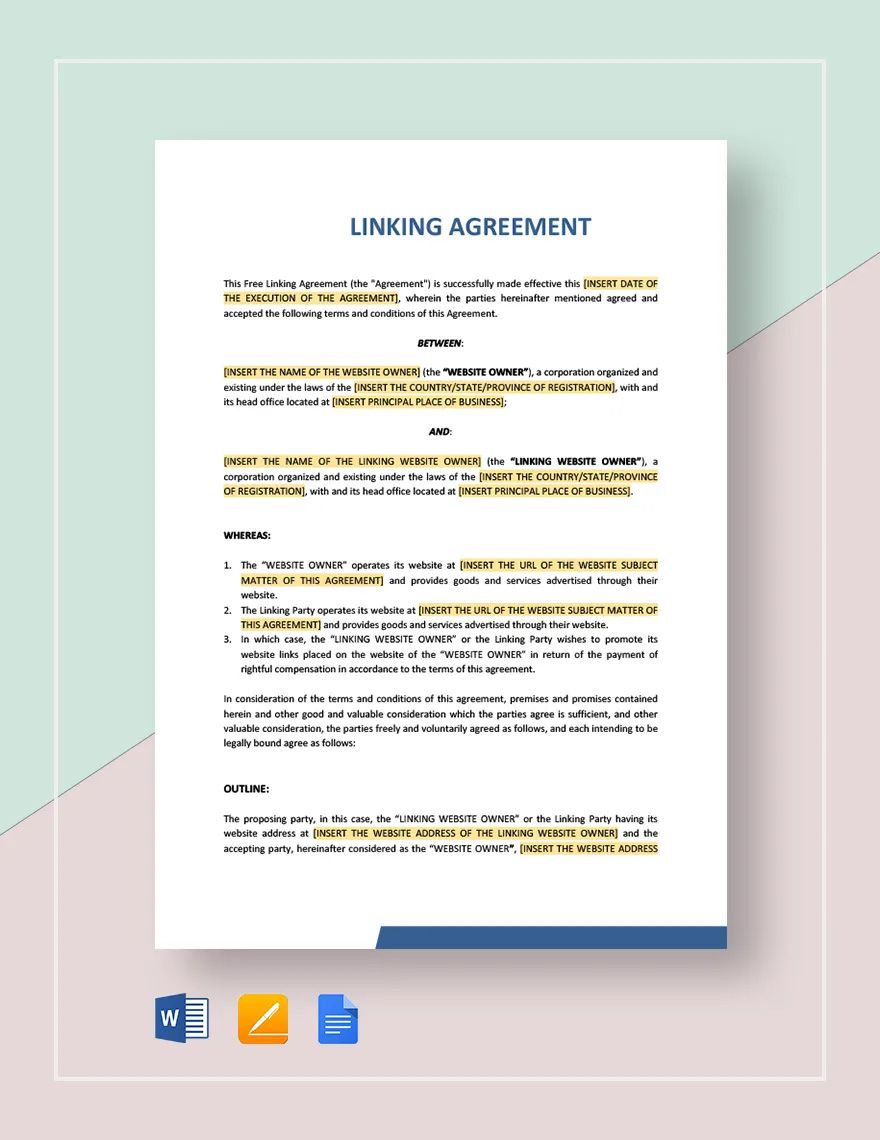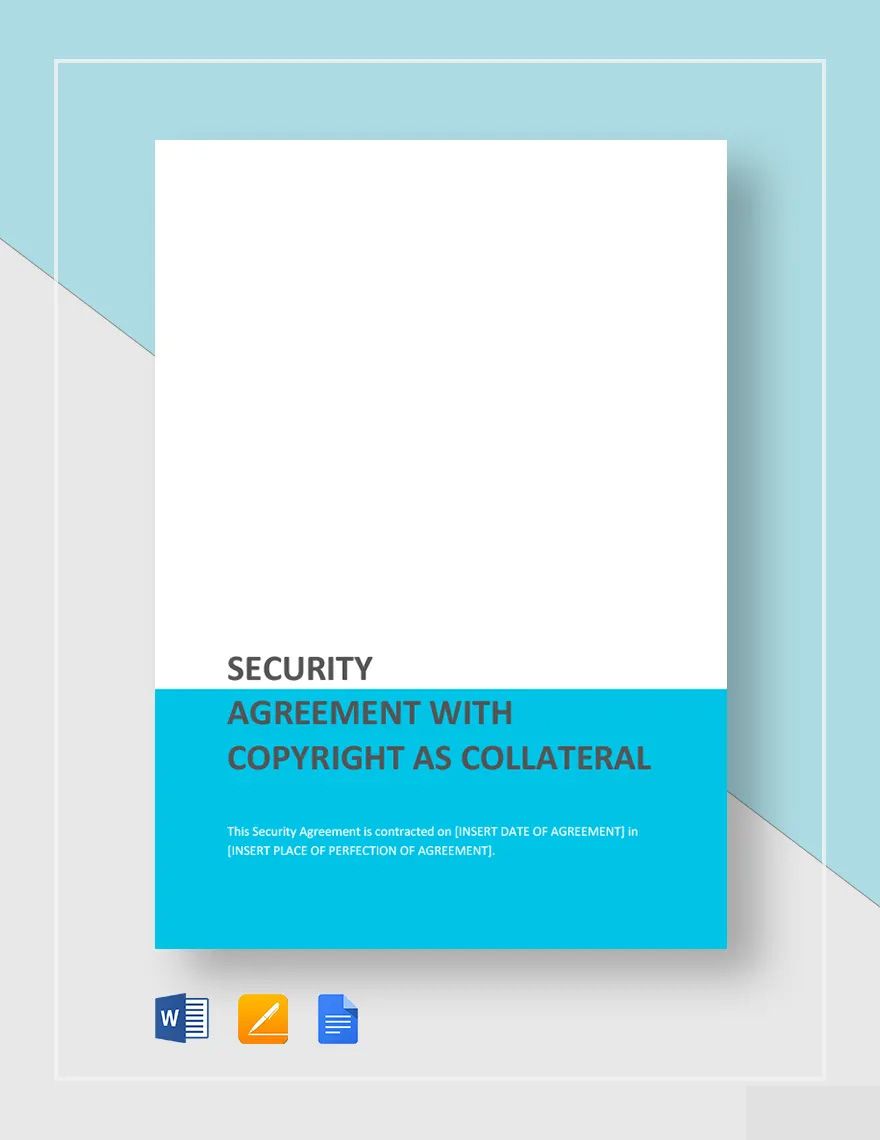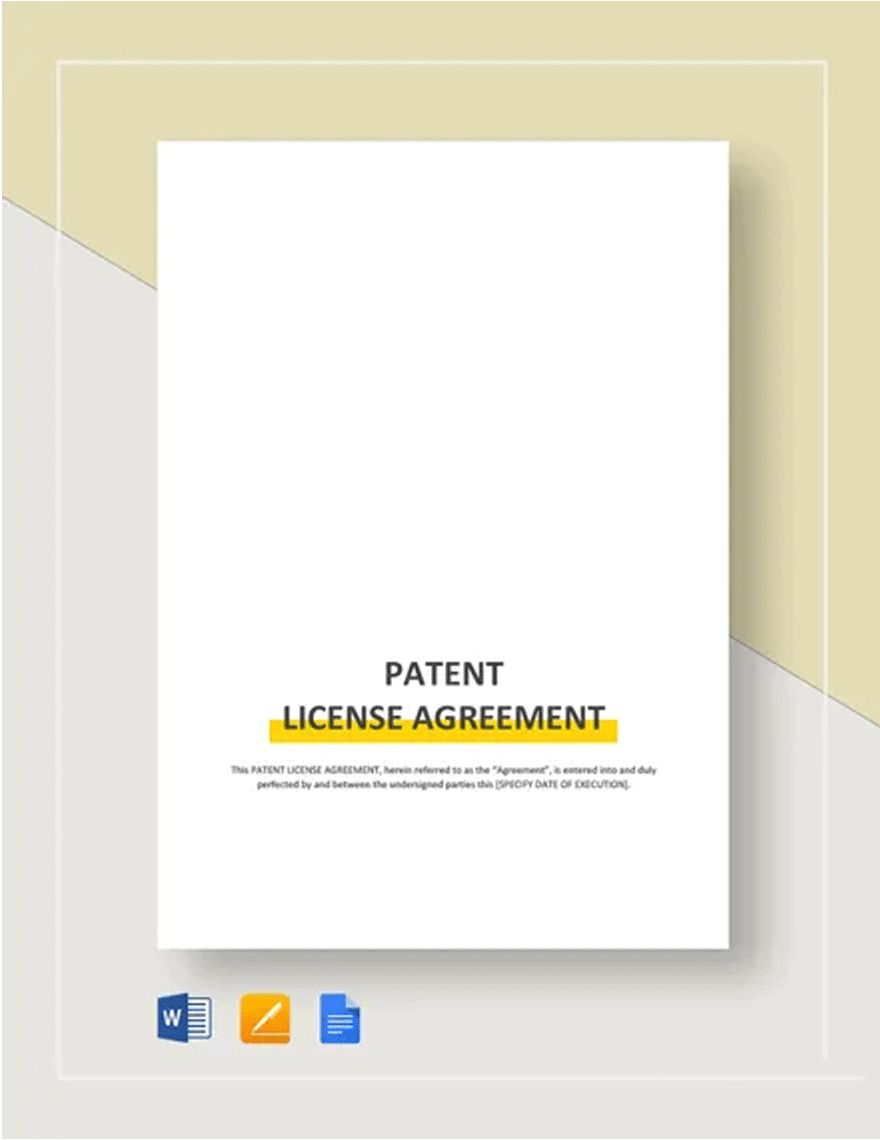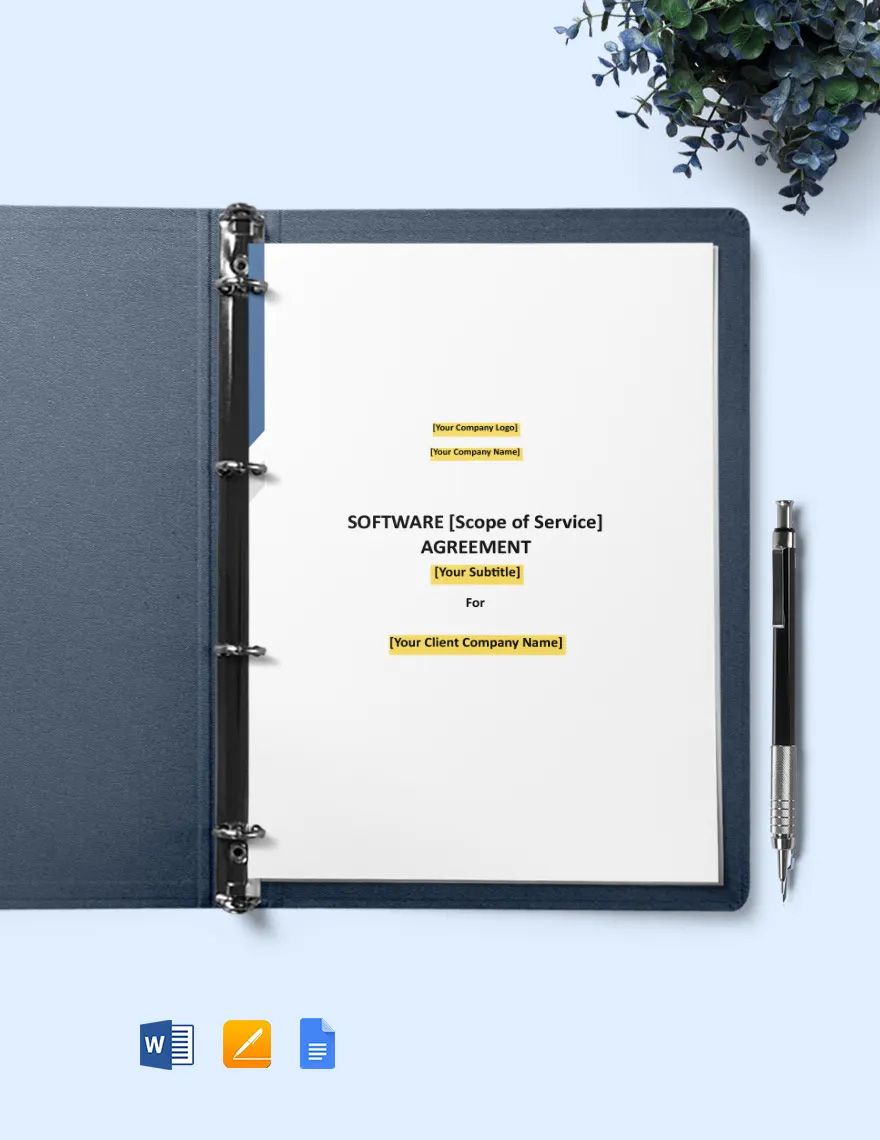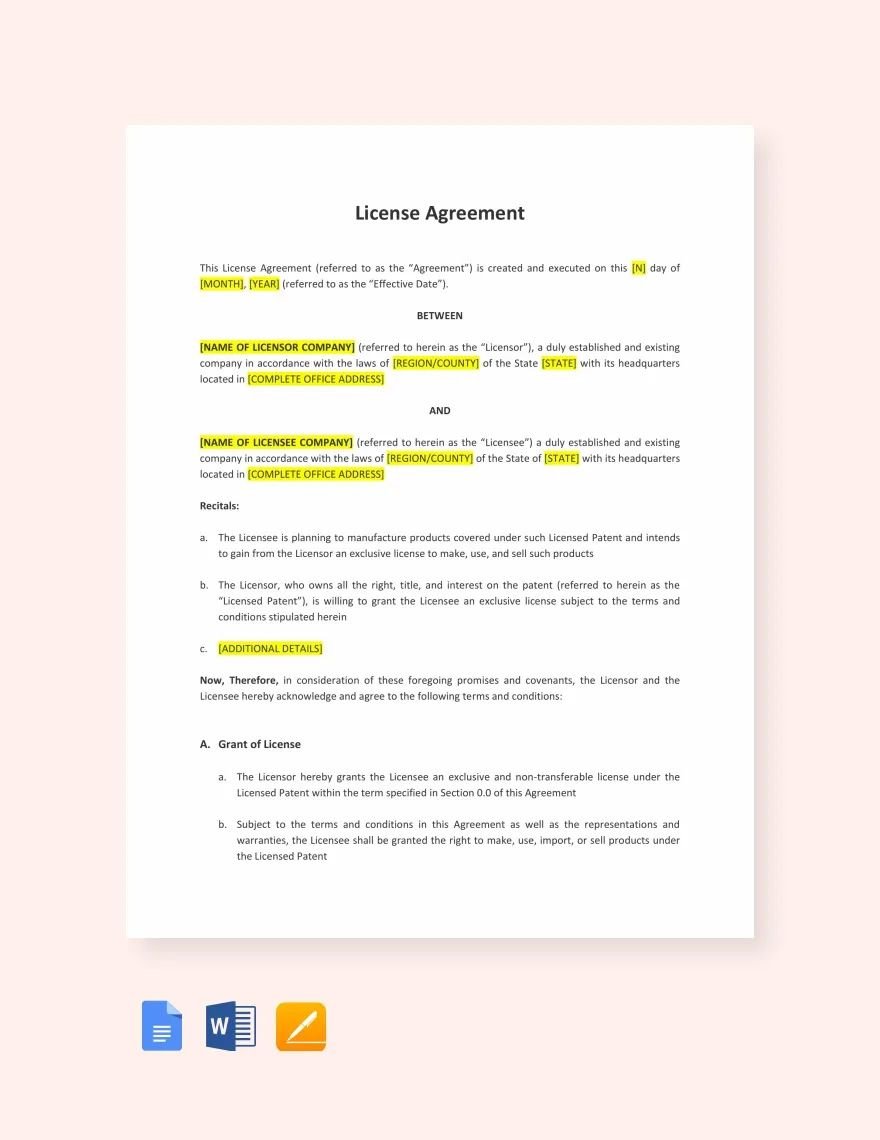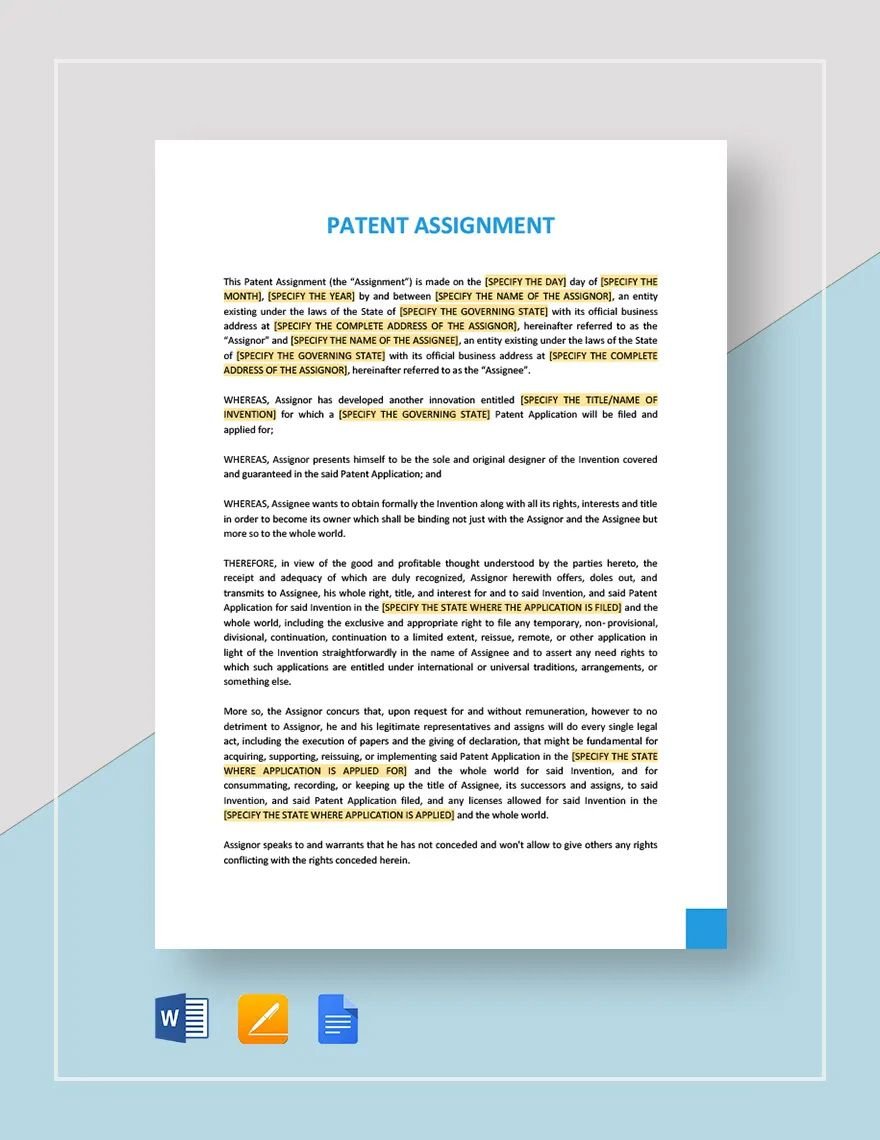No matter what type of patent license agreement that you want to provide to your licensee, exclusive, non-exclusive, or sole license, you must ensure that it is formal, presentable, and easily understandable. To help you make that happen, you can use our Patent Agreement Templates that are available in a lot of file formats, namely Google Docs, MS Word, and Pages file formats. You can choose the file format that you want to work on, hence providing your convenience in editing our template. It has also a well-researched content and royalty-free graphics that you can easily modify to fit your current needs. So, do not miss this chance of owning our ready-made and easily customizable templates by downloading them now!
What Is a Patent Agreement?
A patent agreement refers to the exclusive rights granted by the licensor to the licensee, allowing the licensee to manufacture, sell, and use a certain patented invention. The agreement also defines the number of royalties and other fees that the licensee must pay to the licensor. Basically, there are three main types of patent license agreements: exclusive, nonexclusive, and sole licenses. An exclusive patent agreement provides a single licensee all of the rights to manufacture, sell, and use a certain invention. A nonexclusive patent agreement, on the other hand, also provides these rights and still allows the licensor to negotiate the agreements with other licensees. Lastly, a sole license is somewhere in between; it allows both parties, the licensor, and licensee, to manufacture, sell, and use the invention, but in general, the licensor agrees not to grant the same license to another person.
How to Write a Patent Agreement?

There are several provisions that you must include in your patent agreement and some of the most important ones are presented below. Additionally, you can find the simple steps on how you can write a patent agreement form, which is as follows:
1. Write the Provisions for the Royalties
One of the greatest concerns in a patent license agreement is the payment of the royalties. Royalties refer to the payment made by the licensee to another that owns a certain asset, the licensor, to enjoy the right to use that asset. There are a lot of considerations as regards the structuring of your royalty payments and that includes the following: whether you should request a minimum or guaranteed payment and whether royalties will be calculated based net proceeds or the profit of the licensee.
2. Specify the License Term
In determining the patent agreement term, you must consider the shelf life of your products or assets because as we all know, some goods have a longer shelf life than the others. In this part of your basic agreement, you can include a clause that allows for the termination of the agreement in case some triggering events will happen, for example, very low sales. You can also stipulate a clause where the agreement covers only a short period of time but is subject to renewal depending on the discretion of the licensee.
3. Indicate the Annual License Fee for Patent Agreement
You must also include a provision regarding the annual payment of the patent agreement. You must mention that the licensee must pay the licensor a certain amount yearly in order to retain the license. This means that the amount can be similar or consistent throughout the years or may change, increase or decrease, upon the happening of certain triggering events.
4. State the Dispute Resolution
In case of disputes or misunderstandings, you need to provide in your patent agreement the resolution on how disputes will be resolved. This can be through arbitration, litigation, or any state laws governing such a contract agreement.


